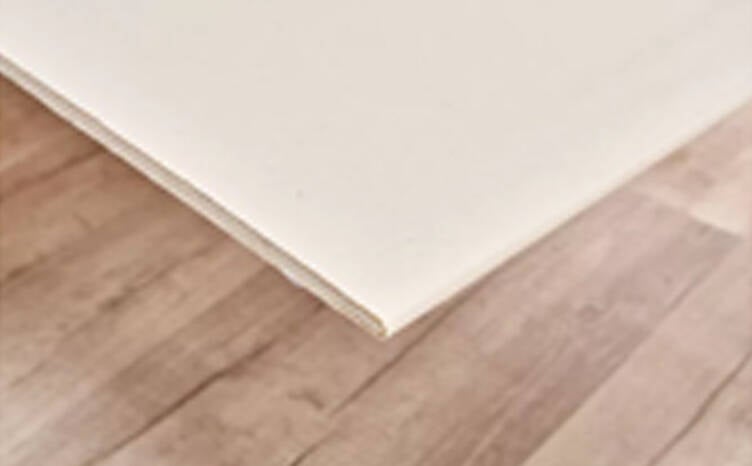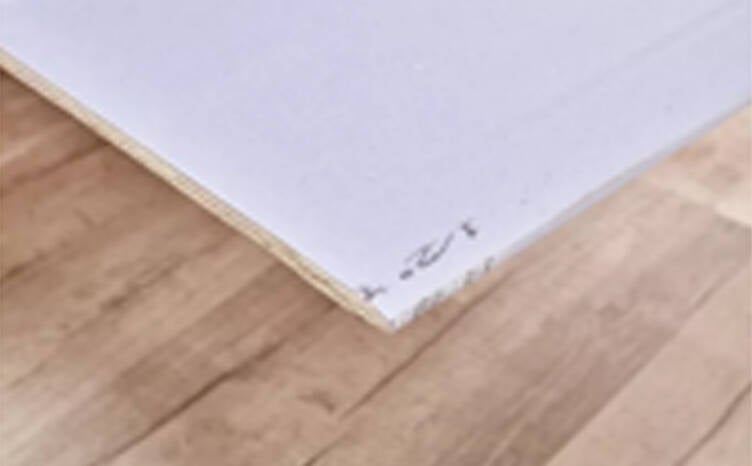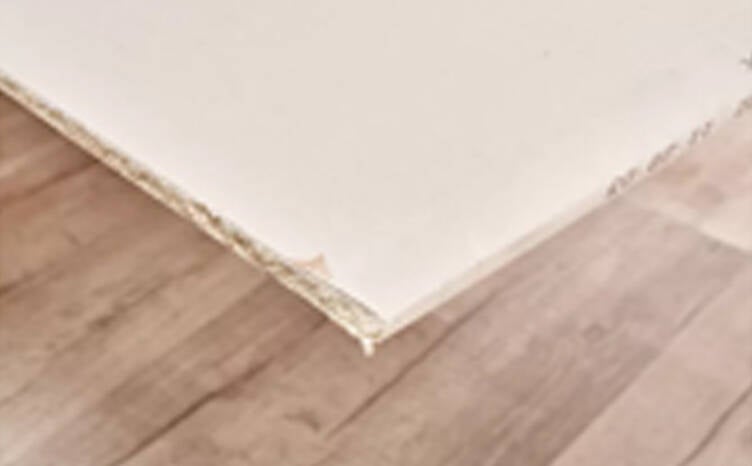Choosing Drywall
When it comes to choosing the right type of drywall for your home, consider its use and the room it will be installed in. For example, most living rooms and bedrooms are suitable for regular drywall, but bathrooms and kitchens should have moisture-resistant options like green board. Purple drywall may be necessary in bathrooms that see considerable amounts of water around the shower walls.
Additionally, most building codes require Type X drywall to be used in garages and walls that separate two living spaces (such as shared walls in apartments, condos, and townhouses). This is an important step to help slow the spread of potential fires.
Drywall Types
Regular Drywall or White Board
Regular drywall (also called white board) is normally white on one side and brown on the other, and as the most common type of drywall used in homes, it's suitable for most rooms. It is made of gypsum, but it does not feature special mold and mildew resistance like other types that are durable in moist areas.
While regular drywall isn't made for the bathroom or kitchen, it's very common to use in bedrooms, living rooms, hallways, and even some basements. This type of drywall is the most affordable option and comes in different sizes ranging in thickness from 3/8 inches to 1 inch.

Best for: Walls and ceilings in most rooms.
Green Board Drywall
Green board drywall, also known as moisture-resistant drywall, has a green covering that makes it more resistant to water than regular drywall. Green board is made of the same materials as regular drywall, but its paper covering is coated in wax. It is also often used as a tile backer in limited wet areas such as bathrooms, kitchens, laundry rooms, basements, and utility rooms.
This type of drywall is not completely waterproof, but rather, it's made to prevent moisture from building up over time in rooms that are exposed to humidity (so don’t use it if it’s going to be in direct contact with water). Thanks to its wax coating, green board is more durable than regular drywall.

Best for: Bathrooms and kitchens.
Blue Board Drywall
Blue board drywall is also known as plaster baseboard, and it's used as a backing for veneer plastering that must be installed on top. The surface paper of blue board has special absorption qualities atop its gypsum interior to look like actual plaster once finished. Blue board drywall is not made for mud, tape, or paint, and veneer plastering requires fewer steps than mudding and taping.
This type of drywall has high water and mold resistance, and it's especially durable in bathrooms or places with a lot of moisture and helps reduce noise.

Best for: Plaster backing.
Paperless Drywall
Paperless drywall is covered with fiberglass instead of paper, which protects the gypsum board from rot and offers even greater resistance to mold and mildew.
Mold Course Chapter. U.S. Environmental Protection Agency. It's becoming more popular as an alternative to regular drywall.
The quality of paperless drywall board is a little tougher than regular drywall, but some construction pros find it easier to cut. This board has some slight textures that require installers to apply joint compound, which helps achieve a smooth, clean finish.

Best for: Long-lasting durability and water resistance.
Purple Drywall
Purple drywall offers the same advantages as green drywall, but with superior mold and mildew resistance. This type of drywall has a gypsum interior that's coated with 100 percent recycled paper for better durability against water than green drywall.
It can be used with all wall and ceiling applications and is ideally suited where enhanced moisture and mold resistance are desired. Purple is the best option to use if your drywall is going to be in contact with water.

Best for: Mold and mildew resistance in wet areas.
Type X Drywall
Type X drywall is a fire-resistant option that contains fiberglass inside its gypsum core. This type of drywall can be installed in several layers to further slow the progression of a fire. Its extra thickness can also improve its soundproofing characteristics.
To receive the "Type X" designation, a gypsum board must achieve at least a one-hour fire-resistance rating for 5/8-inch board or a 3/4-hour rating for 1/2-inch board in a single layer, nailed on each face of load-bearing wood framing members.
This drywall is harder to cut and work than regular drywall, and it's normally used in garages and apartment buildings when it is required by building codes.

Best for: Fire resistance.
Soundproof Drywall
Soundproof drywall is composed of laminated drywall made with a mix of wood fibers, gypsum, and polymers increasing the STC (sound transmission class).
This drywall is denser than regular drywall, so it might be a little harder to cut than other popular options. Due to its soundproofing characteristics, it is used in areas where noise is a problem or when silence is required in a room.
Tip
Some soundproof drywall is made with a thin layer of metal sandwiched inside that can further improve sound deadening.
Soundproof drywall might be used in your family room walls, or if you're a musician, it makes a great option for music rooms.

Best for: Soundproofing rooms.

